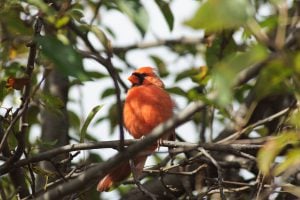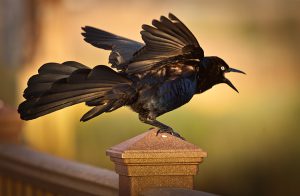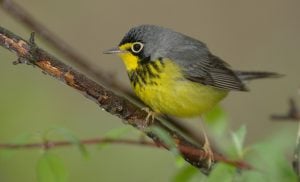
Wildlife
7 ways to enjoy birds in your backyard this summer
You’ll be amazed at the feathered friends you can attract to your yard by following these simple tips
- 1580 words
- 7 minutes
Wildlife
How data is helping us understand why these birds are being found outside of their geographical range

With a golden-orange beak and distinctive flashes of white on its shoulder and tail feathers that contrast with its umber-brown plumage, the Steller’s sea-eagle is a remarkable sight. But a sighting of this bird in North America is made all the more remarkable by the fact that it’s thousands of kilometres outside its usual range in the Russian Far East down to Japan.
Gerry Isaac, a ranger from the Listuguj Mi’gmaq First Nation, was the first to call in a sighting of the eagle in New Brunswick in June 2021. Birders were stunned to discover that, based on the bird’s plumage, this was the same bird seen in Texas a few months earlier, and in Alaska a year prior. It has since earned itself a cult following (the “Steller’s Sea Eagle in Canada” Facebook group has over 3,000 members and counting), with birders flocking to get a glimpse of this seemingly lost individual.
This eagle is known to biologists and birders as a “vagrant,” an animal broadly defined as being found outside its usual geographic range.
“Historically, [vagrancy has] not been well studied, perhaps partly because some people thought it was frivolous,” says Alexander Lees, a senior lecturer at Manchester Metropolitan University in England, who recently co-wrote a book called Vagrancy in Birds. Lees says that while there may not have been much interest in studying the phenomenon in the past, growing interest in the study of vagrancy is allowing researchers to amass data that is helping us to better understand these patterns. Lees’ 2021 book breaks down the reasons for vagrancy into external (exogenous) and internal (endogenous) factors. It’s usually a subtle combination of the two that results in vagrancy (see a range of examples on the map).
The most obvious external factor is weather, where birds are blown off their usual course: this might be a gradual drift or a seemingly spontaneous deviation caused by extreme weather. “They might have no option but to go with the flow and get taken a very long way out of range,” says Lees. “You can’t stop. You stop, you die.” Wind might also cause birds to “overshoot” — they stay on their correct course but keep going further than planned.
Humans can also drive birds outside their normal range, both directly (for example, escaped captive birds, such as the flamingo found on the Ottawa River in 1997) and indirectly (changing climactic conditions could lead birds to extend their foraging range due to a lack of food).
Internal factors involve the inner compasses that birds use to navigate — and the compass errors that send birds wildly off course. Before a migrating bird sets off on its journey, Lees explains, it has to identify a reference point using its inner compass (i.e., north) and then angle itself with respect to that point. Some birds mistake north for south, or east for west, and end up flying in the opposite direction, a phenomenon called “reverse migration.” Others get the first step right, but then orient themselves in the wrong direction, resulting in “mirror-image misorientation.”
Lees cautions that “ultimately, there’s just a lot of uncertainty about what causes these things, and there’s a lack of hypotheses that are being tested.” But, he says, we’re now entering an age where we have the tools and data to understand more.
As of this writing, Canadian birders are once again aflutter at the vagrant Steller’s sea-eagle, which was most recently sighted in Newfoundland. “It’s at its normal latitude. It’s got all the cues it needs there: nice boreal forest, and there are other eagles around, and there’s fish,” says Lees. “Everything is there for it, except another Steller’s sea-eagle.”
*Map range data: Birdlife International and Handbook of the Birds of the World; IUCN Red List of Threatened Species, Version 3, www.iucnredlist.org. Downloaded on June 5, 2022; Vagrant data: Compiled by Denis Lepage from databases including Naturecounts, eBird and Avibase (hosted by Birds Canada). Additional thanks to Stuart A. Mackenzie, Birds Canada.
Are you passionate about Canadian geography?
You can support Canadian Geographic in 3 ways:

This story is from the September/October 2022 Issue

Wildlife
You’ll be amazed at the feathered friends you can attract to your yard by following these simple tips

Travel
Spread your wings with birdwatching’s elite guard in south Texas

Wildlife
Conserving at-risk species is difficult when they’re constantly crossing international borders, but digital tools are making it easier than ever to track feathered globetrotters

Wildlife
How one grassroots organization in Toronto makes our glass landscapes less deadly for birds.